How to get the most out of Carv's coaching

Votes:
Improvement isn’t always a linear journey - in fact it rarely is. When you try to ski better, you’ll have runs where it all feels a bit uncomfortable, runs where you ski just like normal and runs where you feel like you’ve fallen apart. However, you will also have days where it suddenly clicks - and you have a transformational breakthrough.
Our goal is to give you the tools to generate those breakthroughs, so you can keep experiencing more of those 'aha' moments.
So, how do you improve with Carv?
First of all, skiing is hard
Let’s start with the facts. Skiing is an extremely hard sport to master - it requires you to become comfortable moving your body in unfamiliar ways, at high speed.
You have to move your center of mass (your body) away from your base of support (your feet) - moving it forwards and inside the turn - towards the slope - letting your skis run to the outside and onto their edge. While you do this, you need to transition your weight to balance against the outside ski so you can counteract the forces you’re creating in the turn.
Your turn is underway, but your job isn't done. You need to create angulation between your upper body and lower body to keep that pressure increasing against the outside ski as your turn gets tighter - balancing on a knife edge, keeping your ski bent and arcing. As that’s happening, you need to manage the rotation of your feet and upper body, allow your skis to move back under you, recenter on the fore:aft plane and transition your weight early to the other ski to do it all again. All while going at 50kmph or more.
This whole process takes place in about 2 seconds.
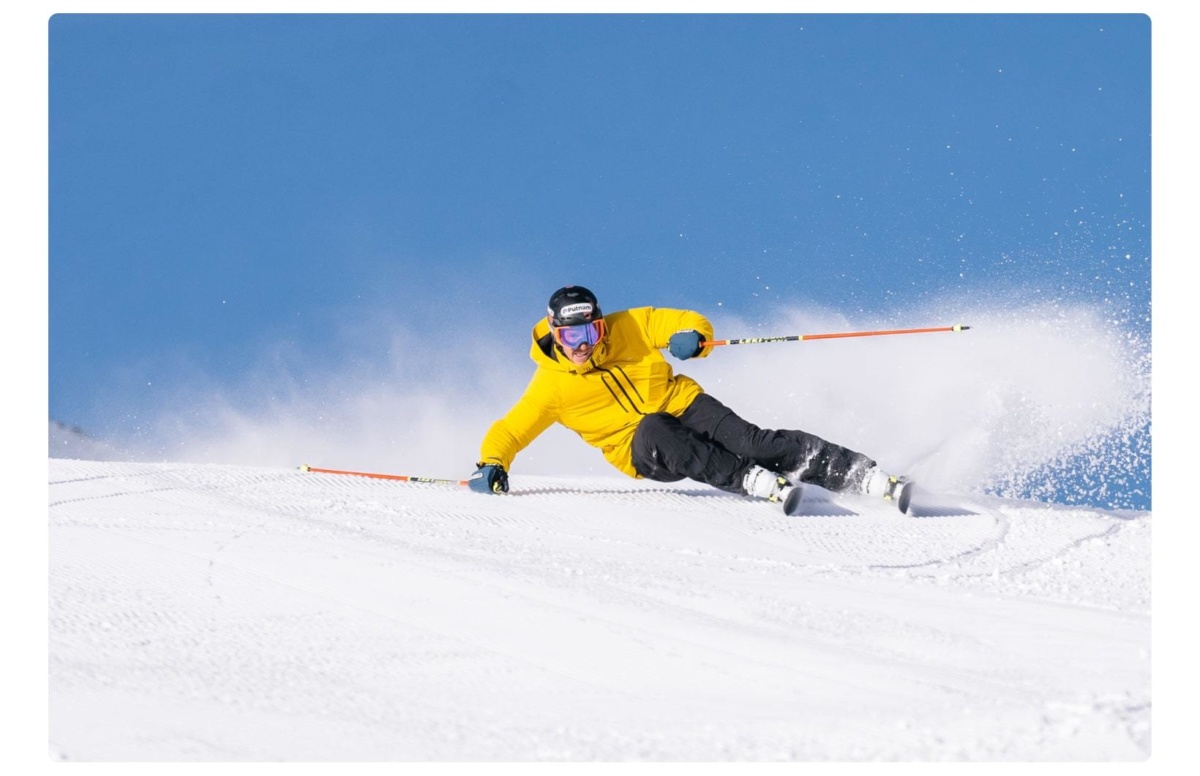
Skiing isn't easy.
Now we are aligned on just how difficult great skiing is, let's start to consider all the ways that we can make the process of improving more achievable.
Carv’s Philosophy
You CAN improve - no matter your level - don’t settle for ‘just skiing like you always did'
If you improve, you WILL have more fun on snow - no matter your level
Putting objective feedback and data into your skiing helps you improve faster
Getting this feedback quickly after your action (turn on run) helps you adapt, try new things, and improve your technique faster.
We’ve built multiple tools in Carv that will help with this process. In this article, I’ll help you understand the Carv toolkit and how to use it to unlock better skiing.
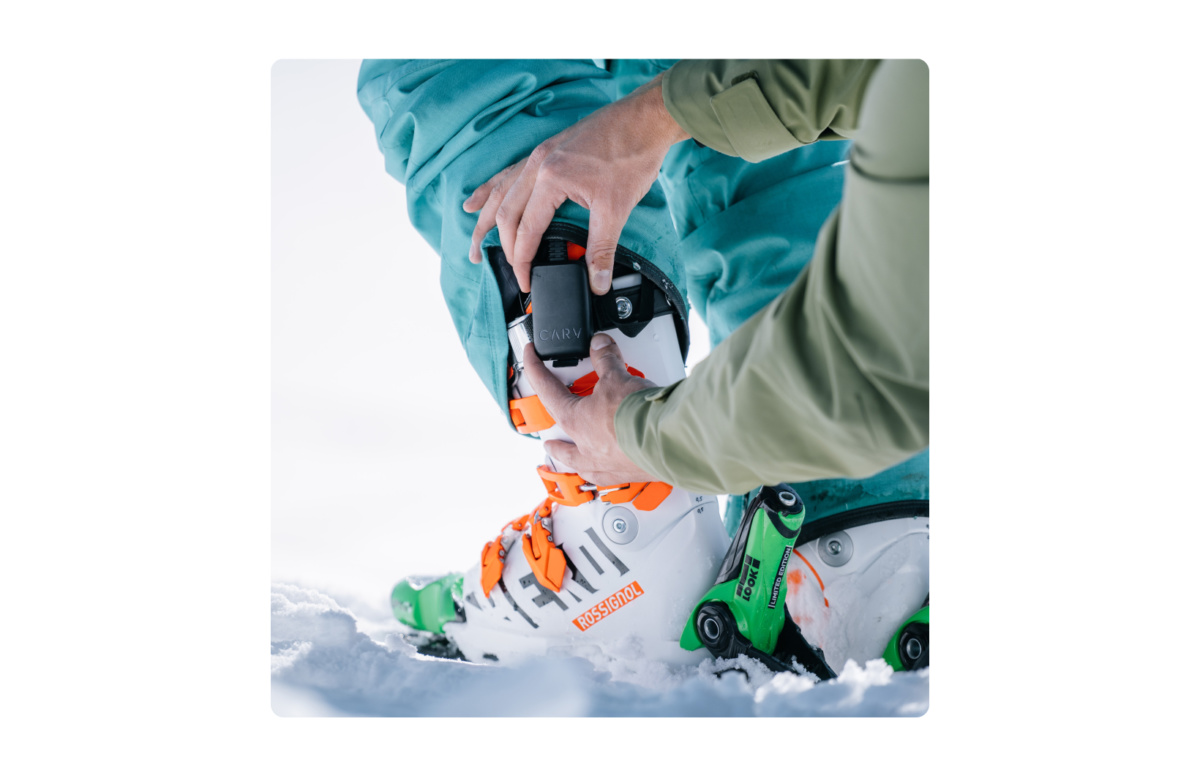
How we built Carv to help you improve
Focus areas: how Carv recommends things for you to work on.
Figuring out what to work on next in skiing can be a challenge with so much happening all at once. This is where Carv comes in. The system is assessing how you ski, and is constantly assessing which metric is the one that is holding you back from getting a higher Ski:IQ.

There's a pro surf coach from Australia, Martin Dunn, who coaches the top pros in the World Surf League and amateurs alike. He describes the importance of focusing the student on just a few things:
"Over 3-5 days, I'll be able to teach only maybe 2 things. You've got to define what the problem is that you're observing.
I just see people for the one day, 2 hours, maybe 3 to 5 days. Now, if I can change two or three major things in that performance or put them on the path to changing their performance in that time, then that's great.
So [I] give them, give them one or two skills, a finite number of things. They can set a target.
But, with anything you learn - you are going to make mistakes, you will be frustrated and [as a coach] you have to explain to them that that's okay. It's something that everyone goes through.
Pulling out the bits that they've done well is really important. In fact, it's only it's funny how before people come and stay, they'll very often oversell their ability and then all that performance immediately after that first session with the camera on them, they then swing completely the other way and undersell it.
I guess part of our job as a coach is to start to line up more accurately what their performance is like with what their opinion of their performances."
(Excerpts from Surf Simply Podcast: https://surfsimply.com/podcast...)

Martin Dunn (courtsey of Surf Simply)
It's interesting seeing this process in a different (but equally demanding) sport because we've built Carv’s focus areas and metrics system to help with exactly that process. When we ski with Carv, the app is constantly assessing our technique on every turn - and it is looking for the metrics we are consistently weak in - these are the metrics that will help you to improve your IQ. They might seem uncomfortable, or new, but give it a few days. Focus, and you will improve.
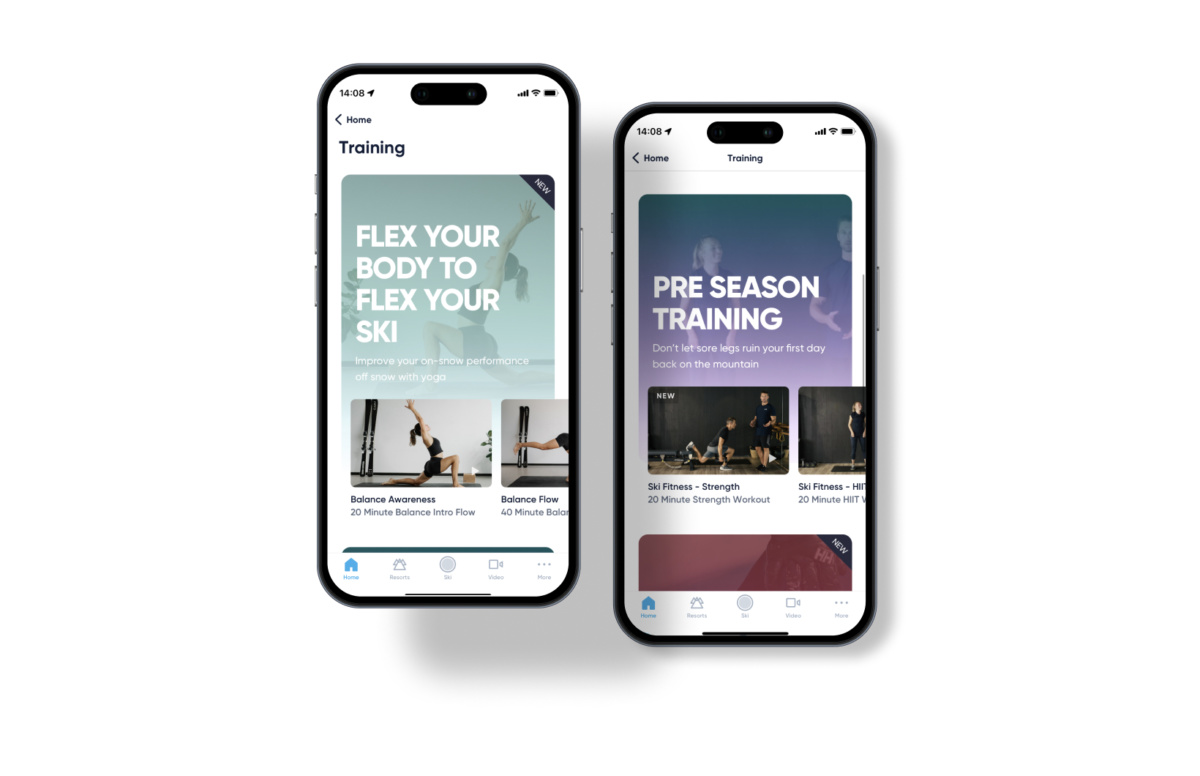
We also use a weighting, created with the help of instructors, that adjusts the likelihood of selecting certain aspects to focus on based on your skiing ability level. This is to make it more likely that a lower-level skier will build certain fundamental skills first - and it increases the chance Carv will coach you on things in a certain order.
You should pay attention to your focus areas - it’s the thing that Carv has determined is most likely to improve your Ski:IQ, so it’s your best chance of getting a new high score.
Tips - Learning on snow
The tips system in FreeSki Mode is the default coaching mode that most people will experience - so let’s look at how that system works and how you can get the most from it.
Carv’s Tips: How it works
Carv identifies your weakest area after 5 runs.
When Carv finds your weak metric, it selects a personalized tip for you.
Tips come in three categories: conceptual, movement recognition, and interventions to try.
All three skills (understanding, noticing, and improving) are critical when you are trying to improve.
The tips you get are tailored to your skill level (intermediate, advanced, expert), and created with input from world-class instructors.
After giving you a tip, Carv monitors your progress in that metric over the next few runs.
Follow-up feedback is provided based on your improvement.
If significant changes aren't observed, Carv suggests a different tip from a new perspective.
Long-form audio tips may be provided initially, offering detailed explanations, while short-form audio tips act as reminders if no changes are made in the following run, helping you stay focused on the concept.
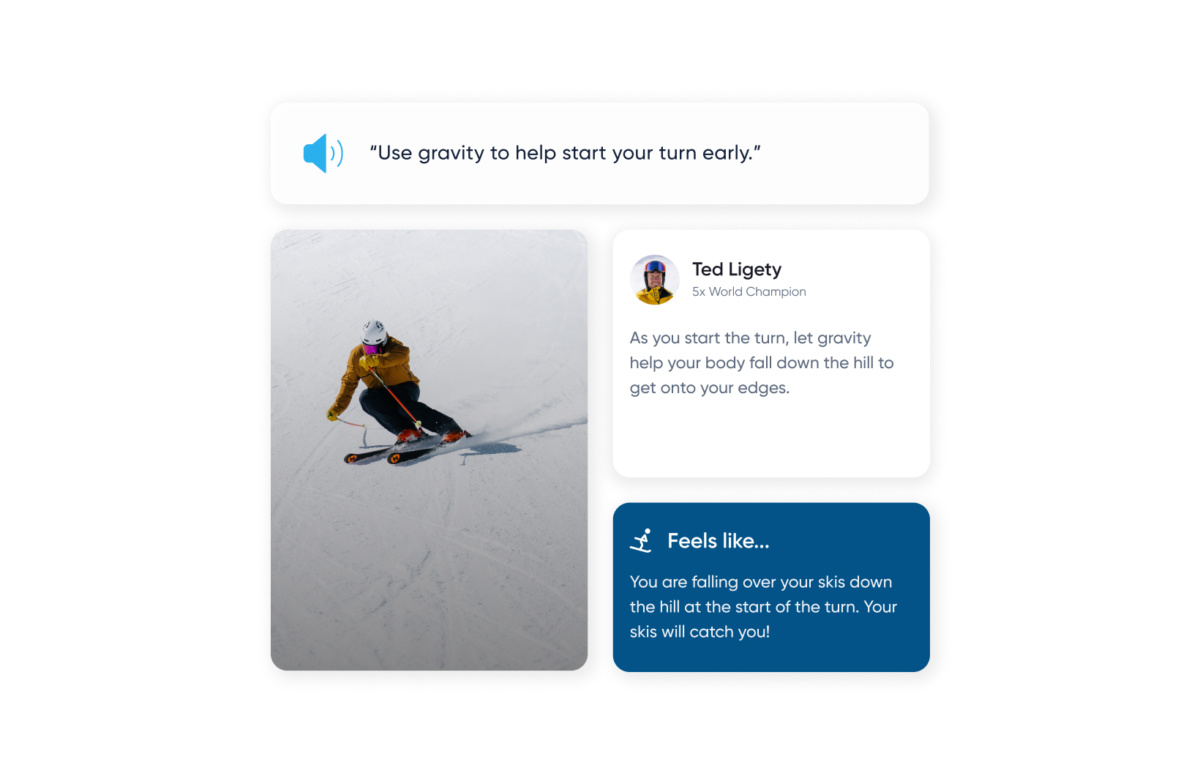
Let’s take Early Edging - a metric people commonly struggle with, to see an example of this process for an intermediate skier (IQ 90-120) who has just skied a run with low early edging scores (i.e a skidded turn):
They'll get on the chairlift and hear:
- "Try to get the feeling of tipping the skis to create two clean tracks in the snow. You will find this easier on gentle slopes."
Then if Carv notices you improve you might hear a more advanced tip.
- "Cross your body over your skis into each new turn like a pendulum. Focus on edging the skis without twisting them."
And if there is no improvement a few runs later you might hear a reminder:
- "Feel for your body moving across your skis like a pendulum"
There are many different tips and we ask you to vote on ones that help and the ones that don't, so we can keep improving Carv.
While this tip system will not always generate a breakthrough, one of your tips might just 'click' and you'll make a chnage in your skiing. You'll likely feel something different when you do this (perhaps a new pressure, or new body shape) - and that can be a powerful moment.
The important thing is to listen to the tip and try and understand what movement it’s trying to get you to do. Sometimes there will be an analogy that helps, sometimes not. It’s designed to get you thinking about the metric, and making your own interventions and assessments. The system will assess your improvement and notice it if you improve - so be sure to recognise your success if your scores go up.
Understanding skiing concepts
One of the hardest things when it comes to improving ski technique is getting an understanding of what each element is and how it affects your skiing. This is why we invested a lot of time into improving Carv’s concept explanations this summer.
Carv often shares technique concepts with you that might be unfamiliar (isn't balance just about being forward, what is this 'Early movement' or 'centered balance' stuff?) Your chances of improvement are much higher if you understand what a metric is all about.
The PSIA, BASI, and almost all ski associations describe how important conceptual understanding is in the learning process. Learning a new motor skill is much faster if you understand what you're trying to achieve and what effect you're trying to create on the ski.
Once Carv has identified your weakest metric from your run data - simply click the metric (or focus area card) and you'll get to the Metric detail screen.
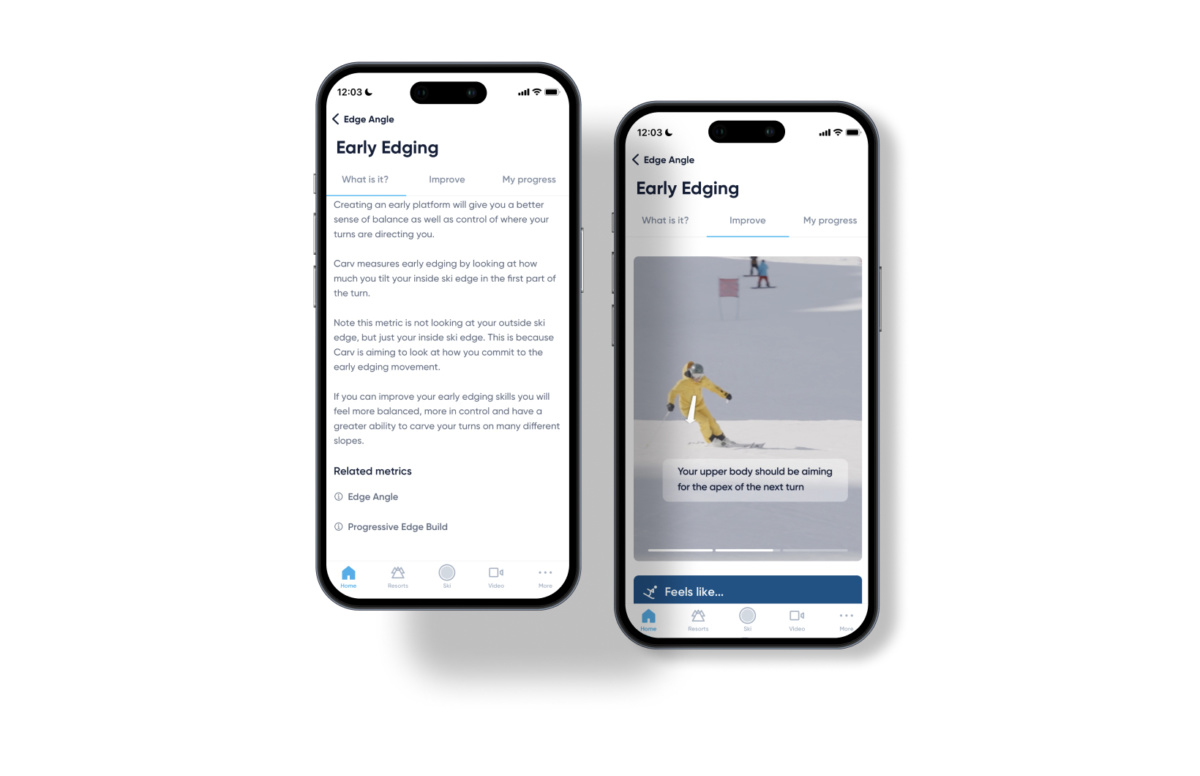
Read the description - to score well in a metric you usually need to make some movements with your body that create a certain effect on the ski - which is what Carv can measure. Do you understand the concept behind these movements? The content explaining it is there in the app.
We created some new learning materials - the “improve” section.
These are designed to be a quickly digestible concept explainer for when you need to brush up. There are a few different approaches here:
A few video ‘cards’
What it feels like
Do’s and Don’ts
Pro advice
Finally the “my progress” section - where you can chart your progress on a metric over time and see what happened when you deliberately practiced that metric.
If you can, get someone to video you from time to time (ideally from the same angle as the slomo video) so you can see how different you look.
Training Modes - for when you want specific 'training' runs.
OK, so we have the concepts and the tips to improve, but what about the other on-snow training modes?
Our training modes are developed to target key skills and progressions essential for top-notch skiing. If you're working on a specific aspect of your skiing, like improving a particular metric, there’s likely a training mode tailored just for that. You'll find these modes linked right at the bottom of the metric screen.
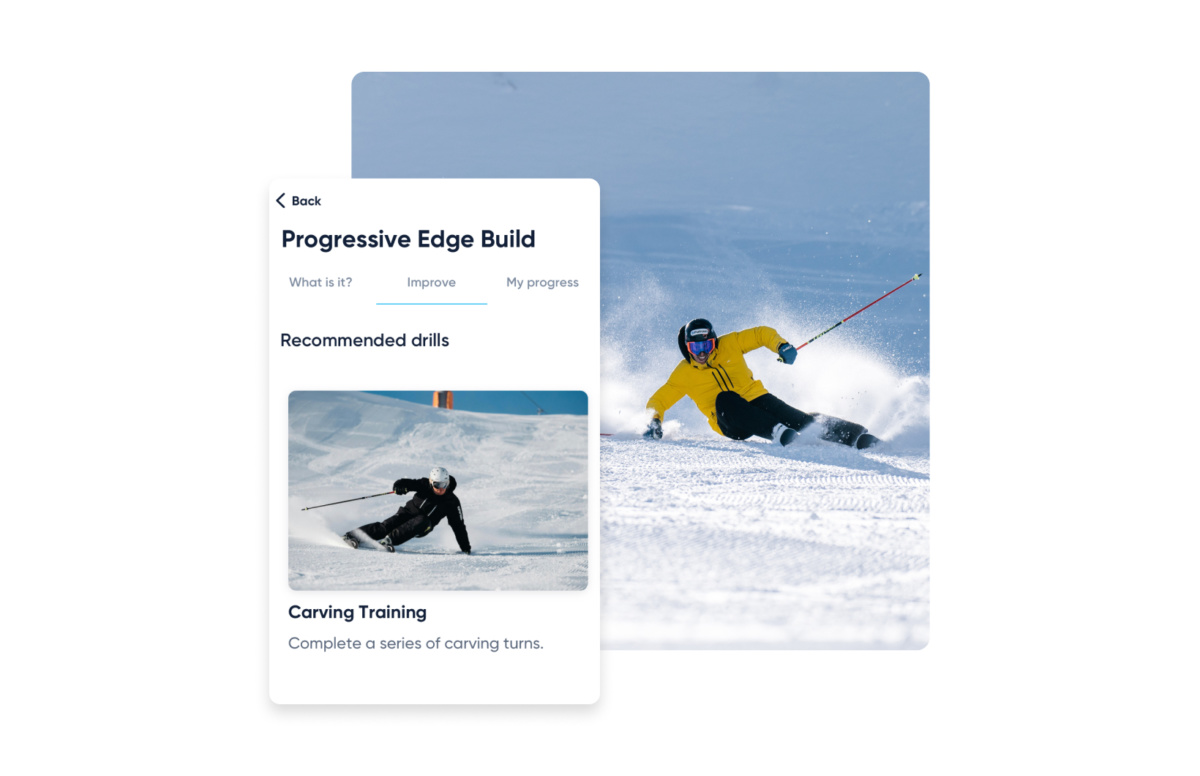
What’s really cool about these modes is how they help you when you're skiing solo. They allow you to concentrate on refining one movement at a time, with your score or target being played directly into your ears. This focused approach does wonders for skill development. Plus, they’re a fantastic motivational tool - as you improve, you unlock new levels, keeping your skiing journey exciting and progressive.
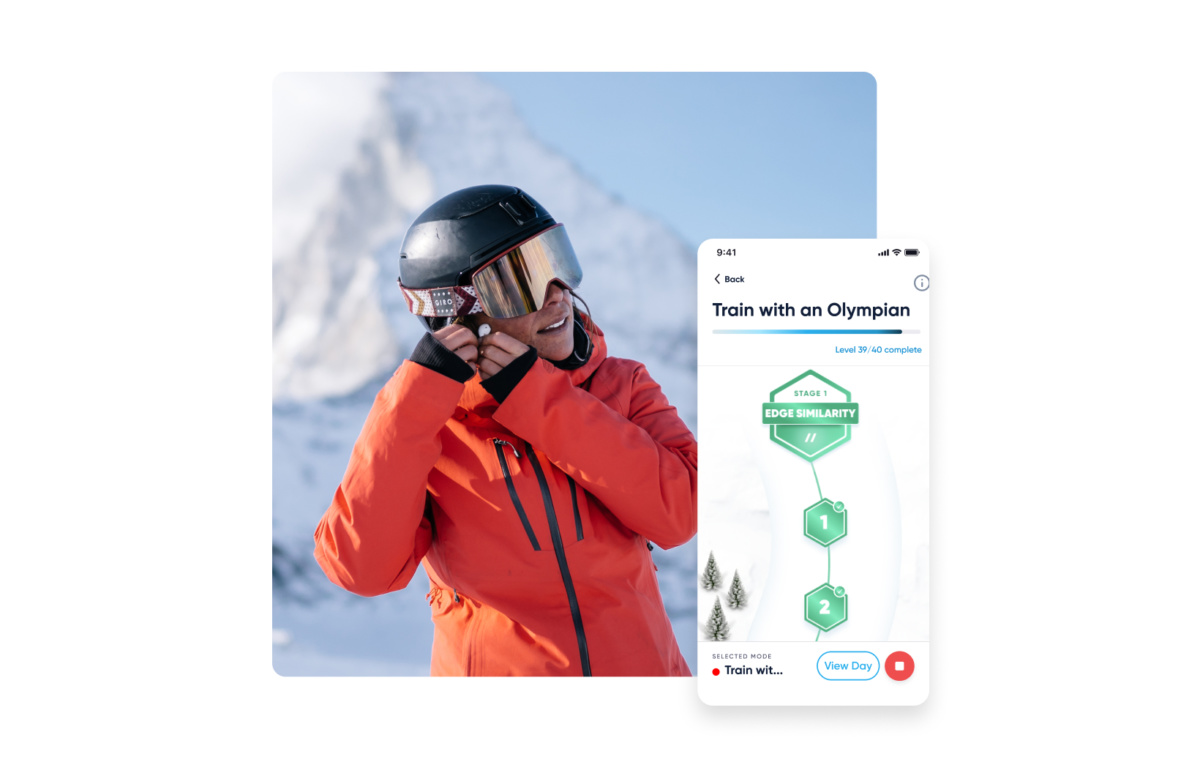
Designed for deliberate practice, these modes are most effective when you already have a grasp of the metric’s concept. So, put on those skis, get into a training mode, and watch as your skiing transforms from good to great!
How our team work on a tricky metric
You've probably noticed by now that there are plenty of ways to up your ski game with Carv. The great thing about learning is that it’s personal - everyone has their method that clicks for them. So, here's how our team, who are lucky enough to ski with Carv a lot, crack those tricker metrics that have been holding them back.
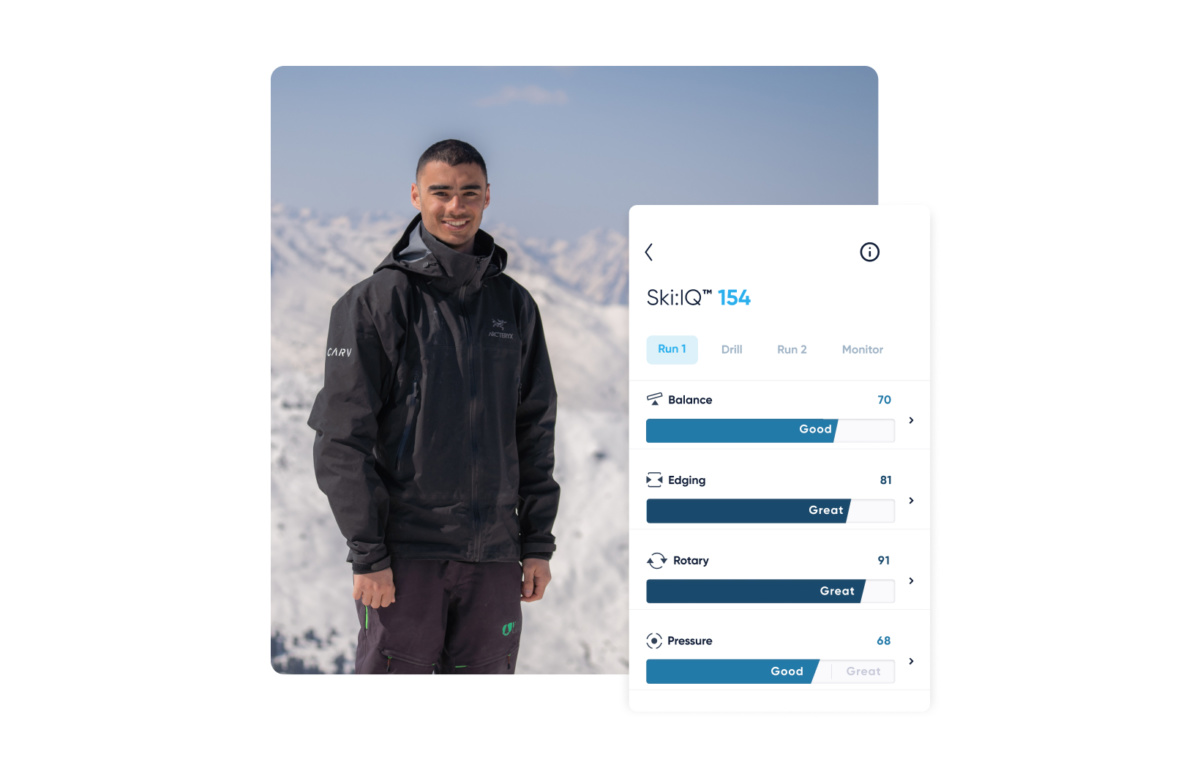
Damian, Product Manager | Ski:IQ 154
I usually hit up a slope with a nice, even pitch. I do a few runs, keeping an eye on my Carv scores to see how they change when I mix things up. It's kind of like playing a game where I try new moves and see what happens.
Early edging is something I'm working on right now, and the Carv explainer screens are super handy. They lay out what I need to focus on and give me tips on how to improve. I find it handy to track my progress with the monitor modes - with the early edging monitor, you hear how quickly you increase our edges at the start of every turn. It's great to watch my progress in real-time, sort of like having a coach in my ear telling me what's working and what's not.
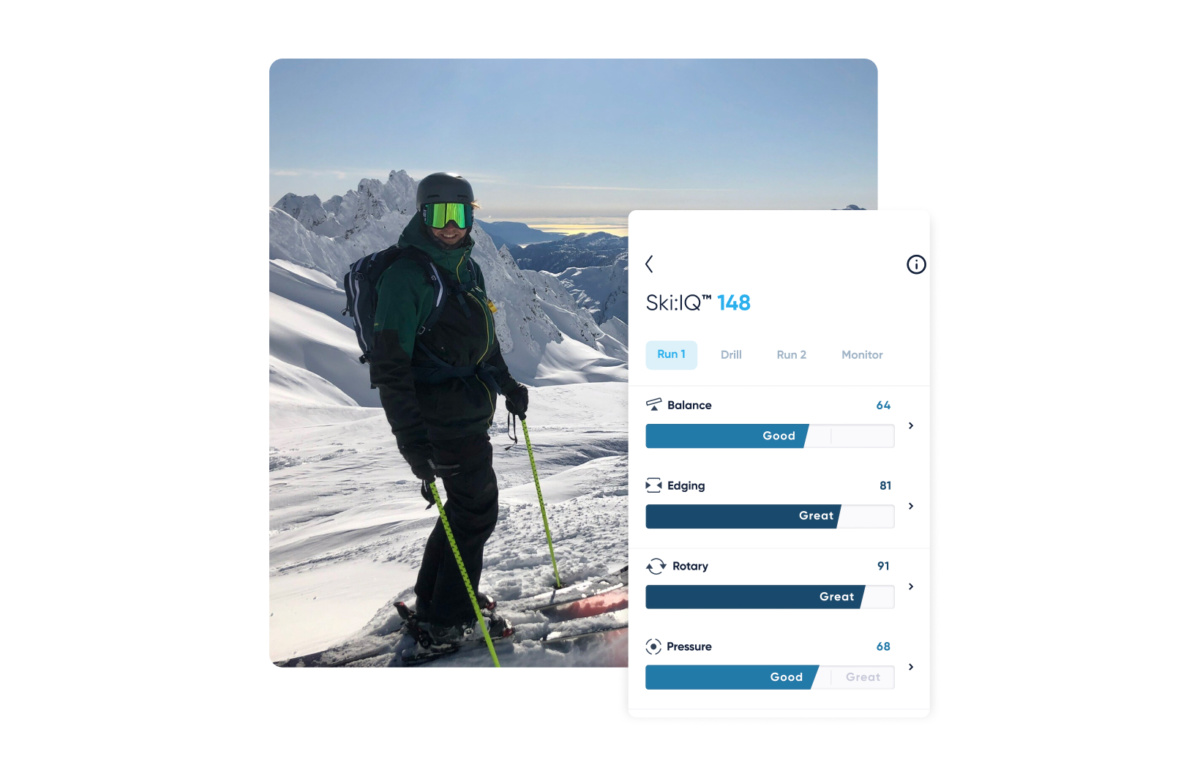
Jack, Product Designer | Ski:IQ 148
One aspect of my skiing that I've been really zeroing in on lately is early weight transfer. I remember being a bit puzzled at first, thinking, 'Okay, how do I get better at this?' To wrap my head around it, I started by analyzing my scores in each segment. When I noticed that early edging needed some work, I dove into reading about it on the metric details screen.
I was keen to understand what it really meant and how it could elevate my skiing. That's when I came across this game-changing tip from Tom Gellie: "For early weight transfer, try pulling the downhill ski tip off the now, like pedalling a bike backwards". It was a lightbulb moment for me! I dedicated 4-5 segments to focus on this technique, and my score improved significantly.
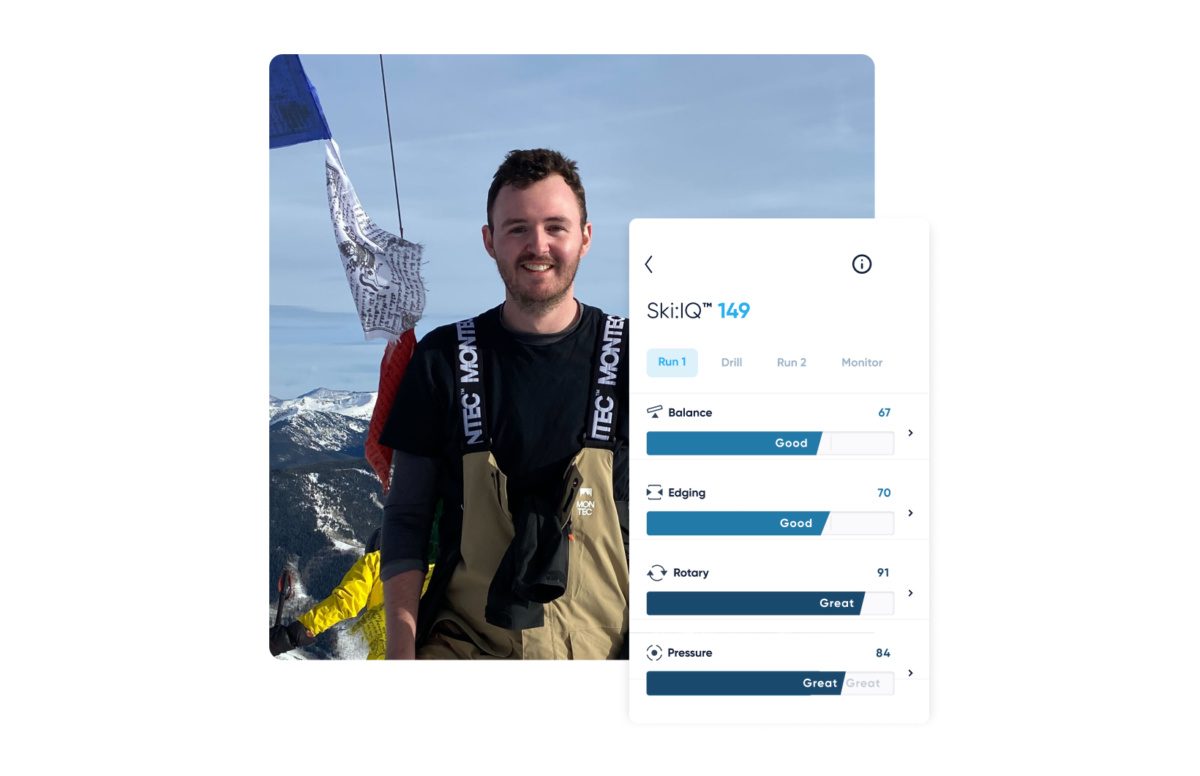
Ben, Operations Manager | Ski:IQ: 149
I’m always trying to beat my personal best in Ski:IQ - I was recently working on getting my edge angles better and getting a bit closer to the snow. I found that mixing up some freeski and monitor modes was super helpful for this. First, I'd hit the slopes in freeski mode to pick up on some key areas I could work on.
Then, I'd switch to monitor mode to focus on those specific parts. The edge angle monitor is really cool – you get to hear what your edge angle is in-ear on every turn! This made it so much easier to get a feel for the right technique and understand it better. It's a fun and effective way to improve your skiing skills!
If you're still stuck
Join the Carv Community
Join the Carv Skiers Community on Facebook to be part of a group of over 10,000 skiers and instructors, all ready to share, learn, and grow. Stuck on a Carv metric? No worries, our community is full of skiers sharing tips, feedback, and awesome videos to help you out. Plus, we love celebrating each other's successes - skiing's always better with friends. We've even had some super fun community meet-ups to swap tips face-to-face. Carv's more than just skiing; it's a whole community ecosystem of people helping each other get better. So come sign-up, get inspired, and start improving!

Check out our YouTube
There’s always work to be done in the off-season! We work year-round with world-class instructors to curate the best ski advice videos and to give you another tool to improve, even off the snow. Check out our YouTube to hear from some of the best skiers in the world and start gearing up for your next ski.
Watch our training videos in the app
Speaking of off-snow content, we also have training videos in our app that will get you in ski shape before you hit the mountain.
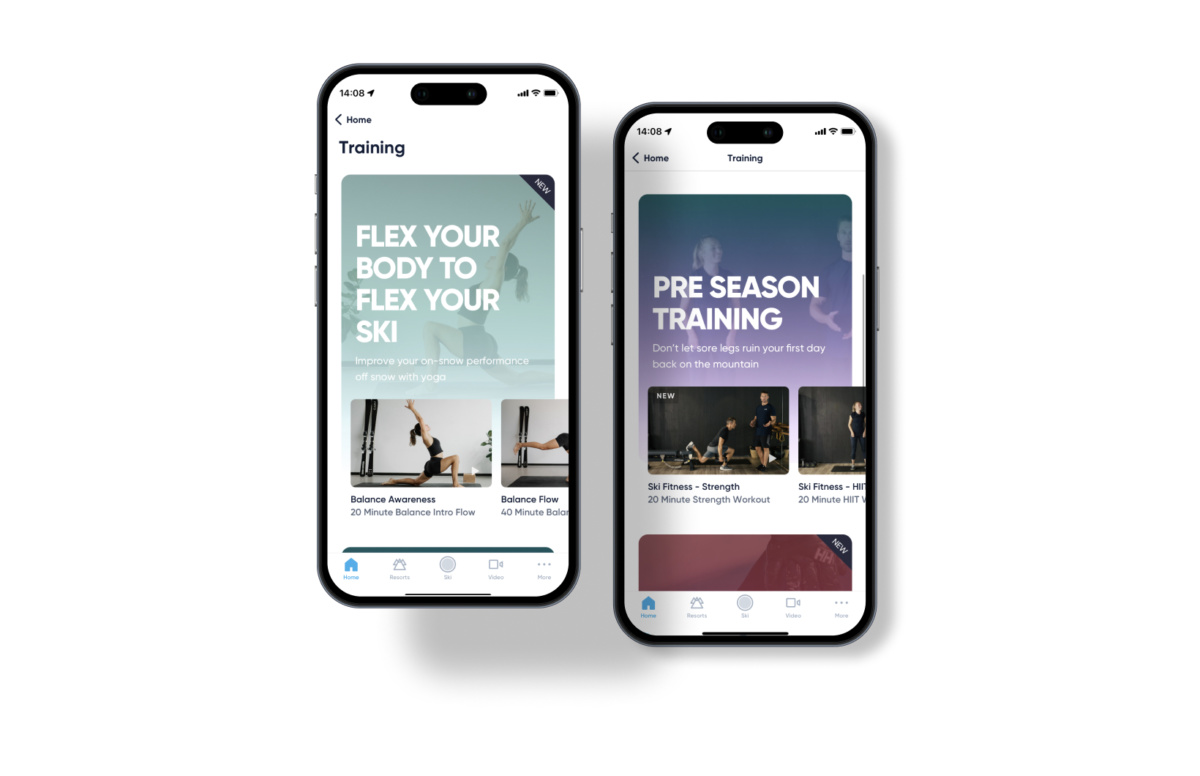
Get a Carv Connected lesson from a pro
Partner Carv’s data with top-notch coaching experience. We have partnered with some of the top instructors and ski schools around the world to create the Carv Connected Lesson experience. You’ll learn from the best ski instructor and you'll get real-time feedback from Carv, helping you see exactly how you're improving, step by step. What could be better than mixing objective, accurate data with the knowledge of a pro to help you unblock a tricky metric? Find a lesson near you!

Learning to ski can be tough, which is why we've assembled a versatile toolkit to help you progress. Carv is an ecosystem in which it actually might be harder to not improve in skiing. Get out on the slopes and share your breakthroughs with us! Don't forget to send us your before and after pictures – our team loves to see your progress. 🎿❄
